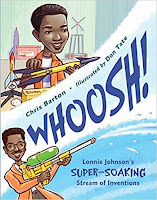 As I reflect on 2017, I think about all of the people who have I have connected with this year. Whether meeting an "Edu Hero" or a long awaited face-to-face conversation with a Twitter friend, I am lifted up by the connections that I have with inspiring and supportive people. Face-to-face conversations with friends and colleagues or long-distance email exchanges, it really is all about the relationships.
As I reflect on 2017, I think about all of the people who have I have connected with this year. Whether meeting an "Edu Hero" or a long awaited face-to-face conversation with a Twitter friend, I am lifted up by the connections that I have with inspiring and supportive people. Face-to-face conversations with friends and colleagues or long-distance email exchanges, it really is all about the relationships.This summer, I attended the International Literacy Association Annual Conference in Orlando. What a jam-packed agenda! The biggest names in reading were there--truly amazing to listen to so many experts (Fletcher, Richardson, Ripp). What was even better was meeting some of my Twitter friends in person. Sean Farnum @magicpantsjones and Jennifer Williams @JenWilliamsEDU were even more friendly and motivating than I could've imagined. With a big hug from each, it reinforced the importance of a digital #PLN.
This fall I had the pleasure of being a part of a mentoring project with a fellow Compelled Tribe member, Jodie Pierpoint https://dreambigmentorship.com/aspiring-leaders/. Talk about a go-getter! She has orchestrated a phenomenal match up of aspiring administrators and experienced school leaders. With Twitter chats and webinars, she is facilitating some amazing work. I am happy to serve as a mentor working with a talented up-and-coming school leader.
With mentoring in mind, I am thankful for the ongoing support I have received from from an accomplished author who reached out to me several years ago after I reviewed one of her books. Since then, Cathie West and I have corresponded via email about the ups and downs of being a writer. Though we have never met, her always positive outlook and encouraging words keep me pursuing my love of writing.
 Earlier this month, I attended a state conference. I love presenting at conferences, as I get the opportunity to talk with others about my passion for STEAM and Maker Education. But with a conference theme of innovative practices, I was grateful to meet some truly remarkable innovators in our field. Randy Ziegenfuss @ziegeran and Lynn Fuini-Hetten @lfuinihetten shared the awesome work in their school district. After participating in their podcast earlier this year, it was great to meet in person. A session on innovative PD with Rich Czyz @RACzyz was a must-see. High energy and great ideas, meeting Rich was a a highlight of the conference. I couldn't possibly forget the show-stopper of the conference George Couros @gcouros . He was incredible! Honest, inspiring, funny, and encouraging. It was so great to meet him, after following his work for so many years.
Earlier this month, I attended a state conference. I love presenting at conferences, as I get the opportunity to talk with others about my passion for STEAM and Maker Education. But with a conference theme of innovative practices, I was grateful to meet some truly remarkable innovators in our field. Randy Ziegenfuss @ziegeran and Lynn Fuini-Hetten @lfuinihetten shared the awesome work in their school district. After participating in their podcast earlier this year, it was great to meet in person. A session on innovative PD with Rich Czyz @RACzyz was a must-see. High energy and great ideas, meeting Rich was a a highlight of the conference. I couldn't possibly forget the show-stopper of the conference George Couros @gcouros . He was incredible! Honest, inspiring, funny, and encouraging. It was so great to meet him, after following his work for so many years.At the conference, I was joined by a team from our district, as well as other educators in our county. The time spent at the conference strengthened our relationships and allowed us to build new friendships. Over the course of several days, we talked, learned, and laughed together, which is after all a foundation for a great relationship.


























